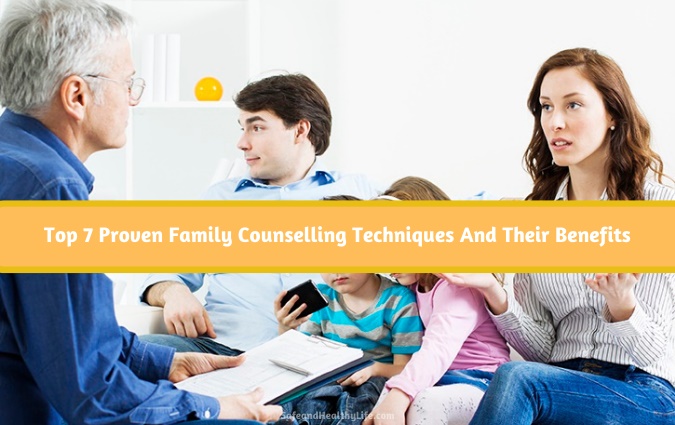
Families hold different meanings for everyone. Some may consider it to be an obligation, a burden while for others, it may be a place of belonging and where they feel the safest. It is the job of a family counselor to not let the former turn into the latter and vice versa.
To achieve this, certain family counseling techniques are followed which have their own benefits.
1. Family Circle
Due to the fast-paced city life, families don’t sit around anymore for meals or simply talk. This is why a proven family counselling technique is for all members to sit in a circle without any distractions like mobile phones or the stress of work.
At first, they feel forced but soon do not realize when time has passed in the company of the people they’ve grown up with. This is an activity family would otherwise avoid but a counselor ensures the opposite.
2. Holding Hands
This is usually paired with the first family counseling technique that is, sitting around in a circle. Now as all the members hold hands, certain hypothetical situations are asked to be imagined by them by the counselors.
The extent of them can vary from heart-warming to scary and by impulse, the members will tighten the hold of their hands. This stimulates an emotional bond based on motor responses among the members.
3. Emotion Based Color Changing Plushie/Toy
At times, members lack communication and this remains the same in counseling sessions. In such situations, a counselor uses a technique that allows members to communicate without having to say anything.
This family counseling technique proves to be very effective outside of sessions as well. For example, the red color of the toy would imply anger and members would know to be cautious.
Eventually, this would develop more understanding among the members and thus, result in better communication.
| Read also: Couples Counselling: The Benefits When Your Relationship Is Rocky |
4. Simulation Using Technology
Similar to the hand holding technique of family counseling, members are divided into teams and asked to play a VR game together.
This establishes teamwork and hence, bonding. Games have a unique way of connecting people and this is the aim of using simulation as a family counseling technique. Gadgets bridge the gap between Gen Z and Millennials.
Playing in teams of two or three is more advisable because that reduces competitiveness. Situations demanding teamwork force the same from the users playing.
5. Writing Each Other Letters
The fear of being looked down upon or judged or not being heard can very well be a cause of family members drifting apart. Another effective method of talking about one’s feelings is writing a letter stating everything that one cannot say in person without any fear.
Families learn to be considerate of one another’s emotions through this technique. Letters feel more personal as well and are proof of genuine feelings.
In the world of text messages and short forms, writing full sentences conveys what one wants to feel more sincere. At the same time, holds more honesty as well.
6. Family Questionnaire
A great way for family members to get to know more about one another is simply by answering questions about each other. These include preferences, likes, dislikes regarding eating habits, colors, hobbies and etc.
This indirectly makes members aware of how much they might not each other despite having grown up together. Thus, instilling a desire to learn about whatever they had not known about each other all this time.
In return, members make efforts and spend quality time. Purpose of counseling achieved. Questions like favorite memory together or memorable together invoke nostalgia and bring back old feelings strengthening the bond between family members.
7. Holding Healthy Discussions
Most families generally meet during holidays where the focus is more on making happy memories while there are certainly important topics that are swept under the rug.
Further, it is important for families to learn how to talk about careers, appearances, and milestones achieved in life without making it a comparison battle between the members.
Counselling offers the chance to do so under the guidance of a licensed professional who ensures matters don’t get out of hand.
Kids avoid family gatherings due to judgemental relatives because their parents, out of fear of ruining relationships, fail to stand up for them. This leads to a vicious cycle of expectations and disappointments.
The above-mentioned family counseling techniques ultimately lead to the last one, that is, learning to communicate better by having healthy discussions that don’t turn into unnecessary fights.
Conclusion
All the seven family counseling techniques having followed with the assistance of a counselor can be implemented at home without the pressure of attending compulsory sessions.
Not every family feels comfortable sharing their problems with a stranger at the first meeting. These techniques as suggested by an expert can be gradually shifted to home.
But, initially, it is preferred and advised to be in the presence of a counselor for better results.
About The Author:
Stacey Smith is a freelance health writer. She is passionate to write about women’s health, dental health, diabetes, endocrinology, and nutrition and provides in-depth features on the latest in health news for medical clinics and health magazines.



![3 Breathing Techniques Which Relieve Anxiety [And The Science Behind Them] Breathing Techniques Which Relieve Anxiety](https://www.safeandhealthylife.com/wp-content/uploads/2021/09/Breathing-Techniques-Which-Relieve-Anxiety-150x150.jpg)
